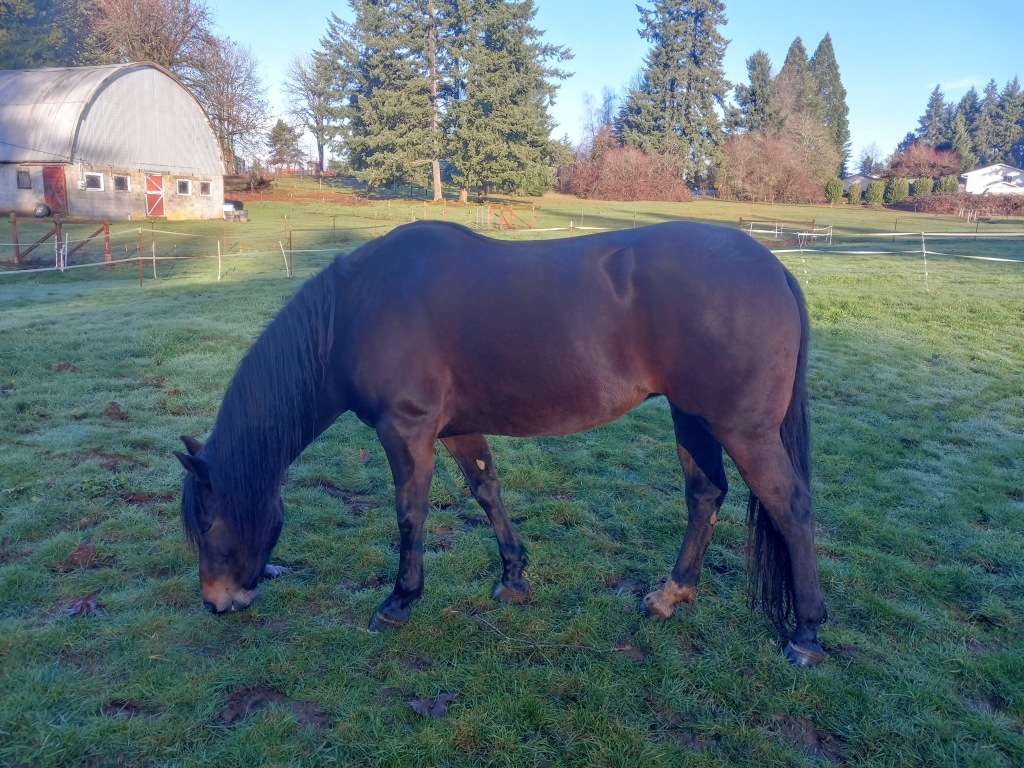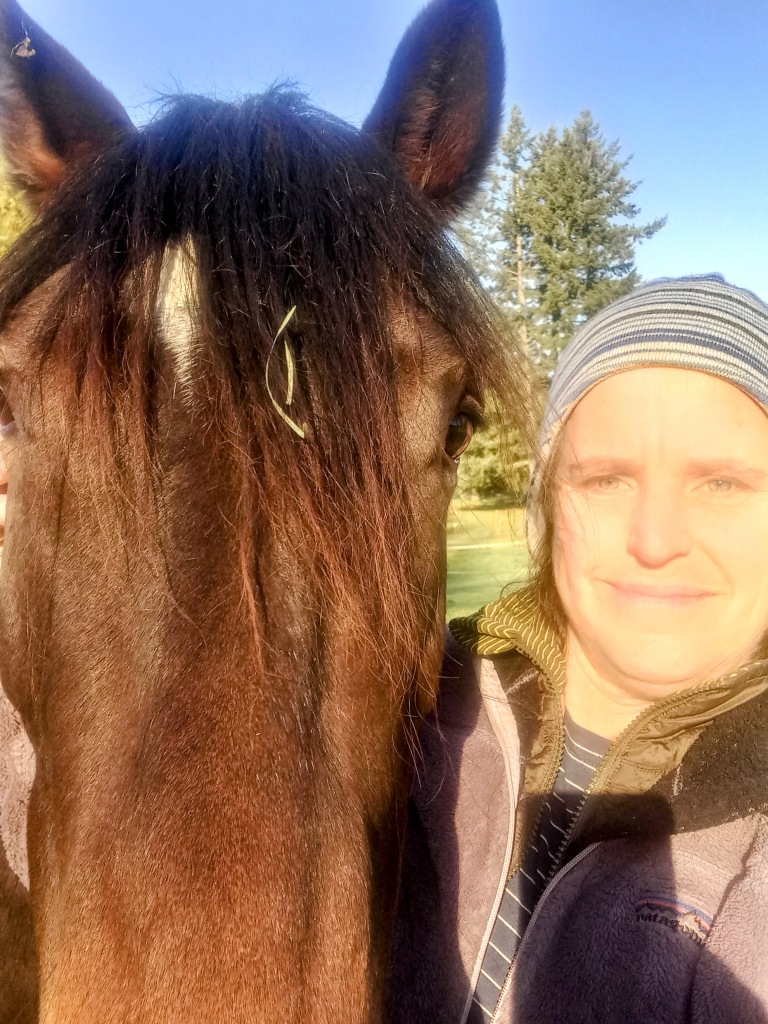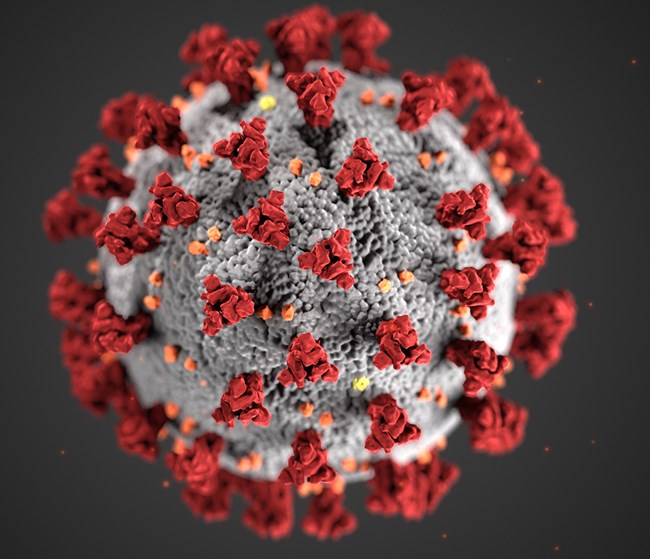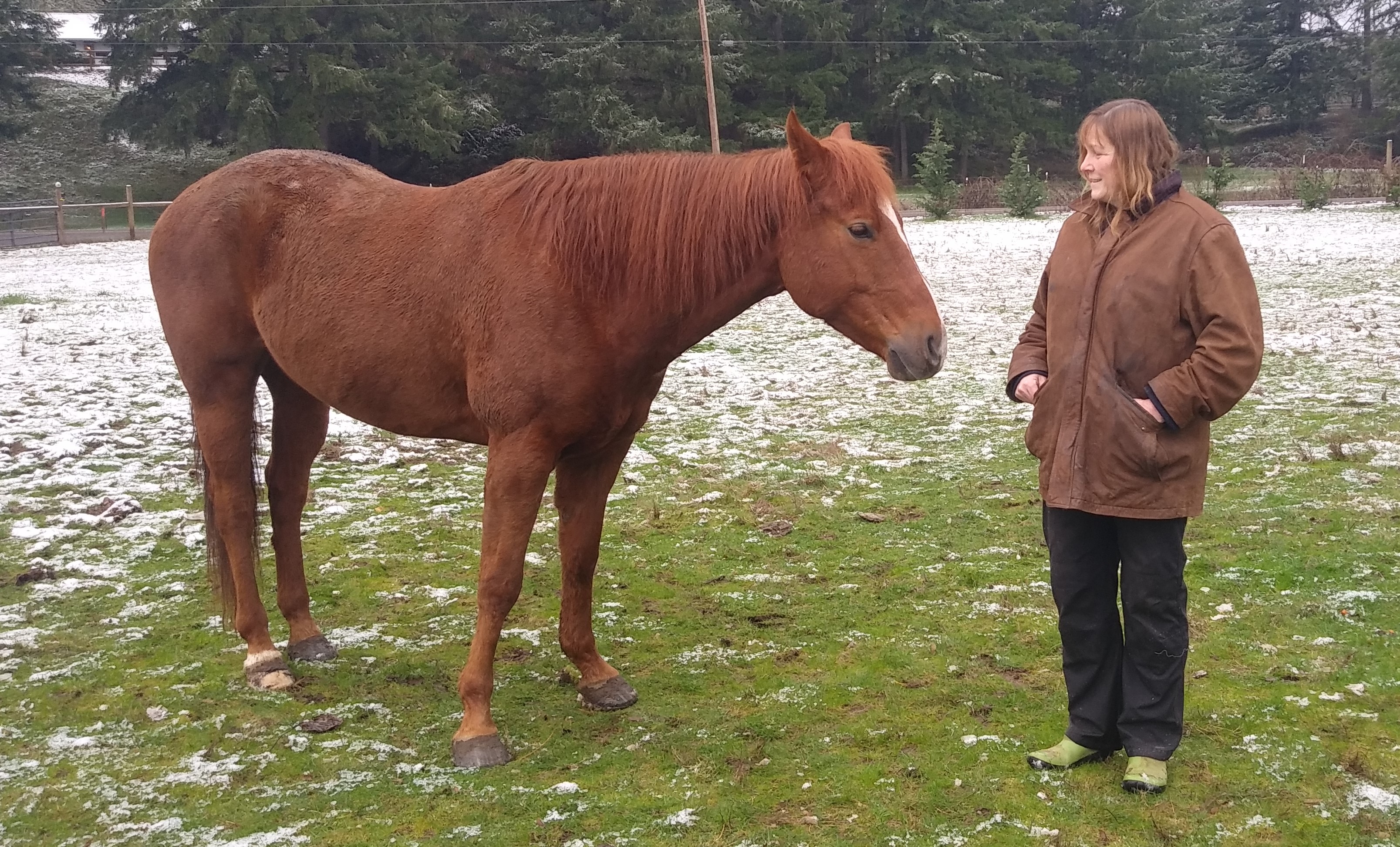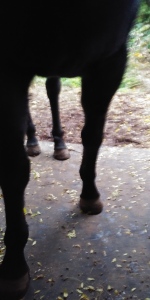March 24, 2024
Kept it pretty short and sweet this AM … no video coverage, just a simple session in the stable yard, in and out of horse trailer, a few grazing breaks, and practicing our approach to the barn.
It’s often said by good trainers that if training is going well, it should look really boring. I couldn’t agree more. Good training doesn’t necessarily sell exciting video, because there shouldn’t be any. The exciting videos are the ones where the animal has already crossed “threshold,” so they are already displaying whatever behavior the trainer is trying to prevent or eliminate. Then you get this fabulous display of sudden change, from “unruly” to “polite,” for example. But the good trainer understands that this is just for show. This change is one correction in time–the unwanted behavior may have been stopped (and it may look really cool!) but the alternative, desired behavior has not been practiced.
Desired behavior at the end of halter and lead, for example, is the horse standing still, not pawing, not whinnying, not tossing its head, not rearing. Who wants to watch that? Yawn.
But if you’re doing right by your animal, if you’re training in the most humane way possible, then b o r i n g is mostly what it looks like. It doesn’t FEEL boring–it feels like fabulous progress and delight in what a fantastic animal you get to work with–but it looks boring, indeed.
So it was with Sprinx this AM. She was resting in her stall, and, adorably, stepped up to put her head out the doorway to watch as I prepared my training kit. While I was in the stall, her head stayed about withers height. I rubbed her face, I pet her neck, she stayed in her own bubble of space. She put her nose into the offered halter. click! We walked outside and she stayed with me like a 20something old timer without a care in the world. Pretty dull!
This session was the first time she stepped all the way into the horse trailer. I stepped in ahead of her. She stepped up and rested with forelegs only in, for a few seconds, then touched the target and took the invitation to step all the way up. Slow and quiet! Then, when I asked, she backed out. That got her energy up for a second (it’s scary to step backwards into nothing!) but as soon as she was out she stood still, slack lead rope, and took a big, deep, sigh. A jackpot handful of hay pellets on the trailer floor, and then we took a grazing break.
Next, we worked at the barn to practice walking next to me in the midst of pretty intense distraction. The barn is less familiar, has hay in it, has stalls and confinement in it–she generally starts to walk fast, raise her head, and forget my whereabouts as we approach the barn. No need to practice those undesirables!
Instead, I reinforce as she walks next to me towards the barn. If she starts to pass me, I stop. She eventually stops, but only after taking a few steps around and in front of me. Nothing to reinforce there. So I just wait. (I still carry my big stick at all times, in case I need to define my bubble, but as long as she’s not encroaching, I just wait.)
Eventually she takes a step back, and I can reinforce that. click! At liberty in the pasture, we’ve been working on hand signals–having her yield her head away from my raised hand. Palm open towards the side of her face, I will click! when she makes the space between her head and my hand get bigger. So, I practice that here now, in front of the barn.
She’s facing me, so I lift my right hand across my body and open the palm towards her right eye. Nothing really happens. So much for that, then. Clearly that cue–open palm towards face–doesn’t have enough meaning yet for Sprinx to bother paying attention to it in the midst of so much distraction.
So I just abort that mission, and we go back to the stable yard where I think she’s more likely to succeed. Once we are several yards from the barn, from the food, from the enclosed aisleway, we practice the open-hand-palm-yield again. Bingo, she yields her head. click! After a micro-pause, I raise my palm again, and she yields her head, but now I wait until she yields a foreleg as well. When she moves her shoulder even a smidge away from me, click! we head back to the barn to practice.
Good Girl, Sprinx!

